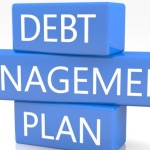As part of an ongoing Friday series, we talked to financial experts around the web about saving money, smart spending, and retirement planning.
 How much do you currently have saved for retirement? If your answer is “not much,” you’re not alone. As a growing number of people are simply living paycheck to paycheck, the whole idea of retirement seems further and further away.
How much do you currently have saved for retirement? If your answer is “not much,” you’re not alone. As a growing number of people are simply living paycheck to paycheck, the whole idea of retirement seems further and further away.
According to The Employee Benefit and Research Institute, 46 percent of Americans have less than $10,000 saved for retirement. What’s worse, a survey conducted by LifeHappens.org found that 87 percent of adults say they aren’t sure if they’ll have enough money to comfortably retire.
The best way to plan for a better tomorrow is to start saving today. In an ongoing effort to have various financial experts weigh in and offer a few golden nuggets of advice, we interviewed the founder and Chief Executive Officer of CoPiloted.com, Jeremy De Bonet, on ways to start saving for retirement.
Read the full interview below:
CG: What is the best way to start growing a nest egg?
Jeremy: I recommend 5 steps:
1) Start saving.
And start saving now. You need to develop the habit of spending less than you earn. Just like how you won’t lose weight until you start eating better, you can follow any investment plan but won’t build wealth until you start saving better. Learn to make due with less, and put the remainder towards your future.
2) Pay off your debt.
Before worrying about how to invest the savings you’re now generating with each paycheck, instead, focus on paying off your debt. Start with the highest interest debt, usually credit cards, and eliminate that first. If you’ve got multiple cards, start with the highest interest one, pay it off, cut it up and move on to the next one. Next move on to consumer debt, automobiles, appliance offers, etc. Then work your way down the line, perhaps paying off higher interest school loans and then your mortgage.
Check out our post on 10 Secret Habits of Debt-Free People to see how to tackle your debt like a pro.
3) Make sure you have a reserve.
If you’ve been saving and have already paid off your various debts, then you’re truly debt free. You should congratulate yourself. You’re way ahead of most people. If you’ve reached this point, the habit of saving is probably deeply ingrained in you, and you’ll quickly move from beginning saver to secure, to then becoming more comfortable to truly wealthy. The biggest thing to watch out for is an unexpected crisis. A medical emergency, surprise layoff, or other bad news might knock you off your game. Before you start putting your money into retirement accounts where it’s hard to get it back if you need it early, put a little aside for emergencies. Generally, two or three months’ expenses are a good rule of thumb.
4) Get started growing your retirement nest egg.
 When you’re just getting started investing, after all your debt is paid off, take advantage of your 401(k) or other retirement plan that your employer may offer. Make sure you contribute as much as you can, but definitely contribute enough to take full advantage of the match. Also, open a Roth IRA. You can open an account at any of the online discount brokerages that don’t have account minimums. Contribute your money, and buy a commission-free, low-fee target risk ETF, sometimes called a balanced fund, appropriate for your risk level. Please note that I said target RISK fund, not target DATE fund. If your brokerage doesn’t have commission-free ETFs, then only do transactions periodically, say after every $1000 you’ve contributed. That way your savings aren’t lost to commissions.
When you’re just getting started investing, after all your debt is paid off, take advantage of your 401(k) or other retirement plan that your employer may offer. Make sure you contribute as much as you can, but definitely contribute enough to take full advantage of the match. Also, open a Roth IRA. You can open an account at any of the online discount brokerages that don’t have account minimums. Contribute your money, and buy a commission-free, low-fee target risk ETF, sometimes called a balanced fund, appropriate for your risk level. Please note that I said target RISK fund, not target DATE fund. If your brokerage doesn’t have commission-free ETFs, then only do transactions periodically, say after every $1000 you’ve contributed. That way your savings aren’t lost to commissions.
Check out our post on Retirement Solutions to get the 4-1-1 on 401(k)s.
5) Build up your taxable investments.
In short order, your retirement savings will grow to the point where you’ll have some options, around the $10-$15,000 mark. At the same time, your habit of savings should exceed what you’re allowed to put into your retirement accounts, and it’s time to start building up your taxable investment account, alongside your IRAs, 401(k).
CG: Is it possible to retire early in today’s economy? If so, how?
Jeremy: First we need to define “retire.” We might start with a traditional definition, e.g., you can “retire” when you have enough savings so that you will be able to maintain your desired lifestyle for the remainder of your lifetime.
The problem with that definition is it does not account for two things: first, longevity. We’re living a lot longer than people realize. Will your early “retirement” mean 30 years? 50? 70?
The second problem is that this definition leaves little room for crisis. Medical problems, legal issues, or macroeconomic changes can throw any plan off course, and if you really want to retire early, your plan needs to be robust enough to overcome these pitfalls.
So for those of us who hope to retire decades earlier, I propose a better definition:
You’re ready to retire when: the annual investment return from your savings and other income generating assets, after inflation, is sufficient to cover all of your expenses and all necessary insurances. (Insurance can be in the form of a conventional insurance product (e.g. health, disability, homeowners, etc.), or can be additional money reserved for self-insurance.)
With the definition above, you can essentially support your lifestyle forever—‘infinite retirement’ if you will. Your principal is not touched by expense, inflation, nor unexpected surprises. At that point you are financially free and you no longer need to work for money.
CG: Great advice! So how exactly does one attain “financial freedom”?
Jeremy: To achieve that, there are three levers which can be adjusted:
- The first and most obvious: how much you have saved? The more you’ve accumulated the better.
- The second: how frugally can you live? If your lifestyle is lavish, it’s going to take a lot more to maintain it.
- The third factor: how much money do your savings and assets generate? For most people, this is the rate of return you’re getting on your investments. This is a huge lever, and generally under-appreciated. The average IRA return is around 4.5%. If you could bump that up just 1%, your nominal return would be about 22% greater. But your real return — your return after inflation — has gone from about 1% to 2%. Your real return is 100% greater!
This means that with a 1% increase in your return, you can retire with half as much. And your investment returns can be not just 1%, but 3, 5 or even 10% better!
How are you planning for retirement? We’d love to hear from you! Let us know in the comments below.


